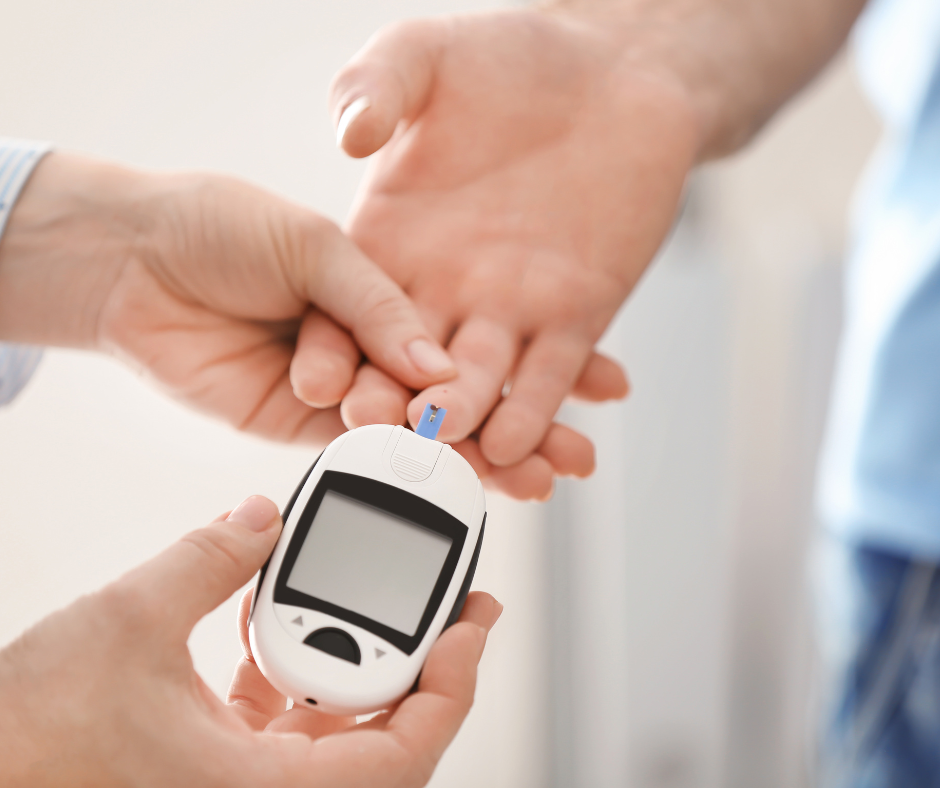5 Ways Diabetes Impacts Your Feet


So, you have diabetes, but you’ve never really considered the impact it can have on your feet. We at Kentlands Foot and Ankle Center love treating people with diabetes and educating them on the importance of proper foot hygiene and management. Today, we’ll be talking about the 5 main foot issues that chronically high blood sugar could lead to.
Peripheral Neuropathy
One of the most significant dangers is peripheral neuropathy, which is nerve damage caused by consistently high blood sugar levels over time. Tingling, burning pain, numbness- you might not feel a small cut from stepping on something, a blister from old shoes, or even the constant pressure of a poorly placed seam in a sock. Without the warning signal of pain, these minor injuries can worsen right under your nose.
Peripheral Artery Disease
Diabetes also frequently contributes to Peripheral Artery Disease, which is where the arteries in the legs and feet narrow due to plaque buildup. High cholesterol can reduce blood flow to the lower extremities.
And when circulation is compromised, your feet feel cold, your legs ache and cramp when walking, and most dangerously, the body’s ability to heal is impaired. Even a small wound or infection on the foot can struggle to receive the oxygen and nutrients needed for healing, which raises the risk of it becoming chronic and non-healing.
Foot Deformities
This combination of nerve damage and reduced circulation can also lead to structural changes in the feet. When the muscles weaken, it leads to imbalances and gait issues that result in foot deformities like bunions, hammertoes, or even the devastating collapse seen in Charcot foot.
These deformities then create abnormal pressure points on the foot, and coupled with impaired sensation, they can continuously rub against your shoes without you even feeling it. Yet another risk for blisters and cuts.
Infections
High blood sugar levels can also weaken your immune system, which can make a diabetic more vulnerable to getting sick. This weakened defense, coupled with reduced blood flow and neuropathy, creates a perfect storm.
What might be a simple cut for someone else can quickly escalate into a severe fungal infection for a diabetic.
Diabetic Foot Ulcers
All these factors can culminate in the development of a diabetic foot ulcer – an open sore that penetrates through the skin. These ulcers are the most serious threat, as they can become infected, lead to deep-seated bone infections, and tragically, are the leading cause of lower limb amputations in people with diabetes.
Manage Your Diabetes
The dangers of diabetes for foot health are significant. Proactive daily foot checks, choosing appropriate footwear, and regular visits to a podiatrist are not just recommendations; they are vital steps in preventing these life-altering complications and preserving mobility.
Interested in learning more? Schedule a comprehensive foot examination with Kentlands Foot and Ankle Center podiatrist Dr. Jon M. Sherman. To make your appointment, please call our office at 301-825-9697.
RECENT POSTS
categories
- Uncategorized
- Featured Articles
- Foot Disorders
- Broken Ankle
- Broken Toe
- Fracture
- Foot Health
- Foot Care
- Arthritis
- Foot Pain
- Skin Cancer
- Podiatry Appointment
- Custom Orthotics
- Podiatrist
- Diabetes
- Gout
- Heart Health
- National Nutrition Month
- National Foot Health Awareness Month
- Foot Safety
- Foot and Ankle Injuries
- Falls Prevention
- Chronic Heel Pain
- Shoes
- Laser Therapy
- Quoted
- Physical Therapy
- KeryFlex
- Sweat
- Summer Foot Care
- Sports Injury
- ESWT
- Fungal Toenails
- Bunion
- Plantar Fasciitis
- PinPointe Laser
- Heel Pain


